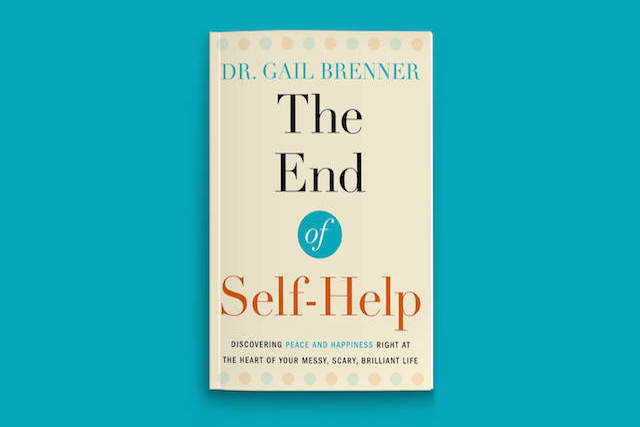
Update: The winners for this giveaway have been chosen. They are:
When I first found what looked like a self-help book called The End of Self-Help, I thought it was a tad ironic. And I wondered if perhaps the author was suggesting that self-help is inherently harmful.
As someone who’s bounced back from overwhelming adversity using some very powerful self-help tools, this didn’t quite sit right with me.
Then I decided to stop wondering what this book was all about and instead find out by reading it. I couldn’t be more grateful that I did.
Powerful and insightful, Dr. Gail Brenner’s book touches upon a common misconception that might lead us to self-help resources—the idea that we’re broken and need to be fixed.
This mindset keeps us focused on the possibility of happiness in the future instead of enabling us to create happiness and fulfillment right now.
But there is another way. We don’t need to embrace personal development from a place of inadequacy. It is possible to simultaneously empower ourselves to grow and allow ourselves to feel whole and happy in the present.
The End of Self-Help teaches us how to do the latter.
If you’ve ever felt trapped by your thoughts and feelings, if you’ve ever felt fundamentally damaged, if you’ve ever felt incapable of feeling peace in the present, The End of Self-Help could be life-changing for you.
I’m grateful that Gail took the time to provide some incredibly detailed answers to my questions, and that she’s provided five free copies of her book for Tiny Buddha readers.
The Giveaway
To enter to win one of five free copies of The End of Self-Help:
- Leave a comment below
- For an extra entry, tweet: Enter the @tinybuddha giveaway to win a free copy of The End of Self-Help http://bit.ly/1iNkb2f
You can enter until midnight PST on Monday, September 28th.
The Interview
1. Tell us a little bit about yourself and what inspired you to write this book.
First, Lori, I’d like to thank you so much for this opportunity to connect with your readers. We get to talk about my favorite topic—peace and happiness!
By profession, I’m a clinical psychologist based in Santa Barbara, and I’ve loved my work with the elderly and their families, specializing in aging, loss, and dying.
For as long as I can remember, I’ve been on a quest to be happy. Even after fifteen years of psychotherapy and reading many self-help books, I was still experiencing anxiety and wondering how I could truly feel happy and fulfilled.
Like many of us, I was a self-help failure, but I kept searching!
Finally, I turned to spiritual teachings where I discovered this truth: that unhappiness is a case of mistaken identity. When we suffer, we’re defining ourselves by conditioned ways of thinking that aren’t necessarily true. And when we stop clinging to these identities, we’re happy.
I’m passionate about the liberating fact that who we are is not the limited, unlovable person our thoughts tell us we are. I wrote this book because I want everyone to have the opportunity to live fully, without fear, in openhearted contentment and love.
2. What differentiates your book from most self-help books—and do you believe self-help can be positive and, well, helpful?
The intention of self-help is pure—we just want to be happy. We don’t want to live our lives feeling broken and inadequate. It makes sense that we look to self-help offerings to help us discover the peace we’re so desperately looking for.
But here’s the problem. The phrase “self-help” contains an incorrect assumption about who we are. It assumes that we are broken and damaged selves who need to be helped.
And while we’re searching for help and trying to fix ourselves, what is our present moment experience? It’s not happiness, fulfillment, and the simple enjoyment of life. We feel anxious and inadequate, and we mistakenly think we’re missing what we need to be whole.
The premise of The End of Self-Help is that we can always find our way to happiness and peace in any moment. Instead of waiting for happiness, we get to live it right now. This is a marvelous discovery!
That said, self-help can teach us about specific topics, such as communication skills, strategies to change habits, or ways to maintain healthy boundaries.
But if we spin our wheels relentlessly looking outside ourselves for that one tip—or person or situation—that will finally make us happy, we’re believing we need to be fixed, and we won’t be successful.
The solution is to make a U-turn with our attention inward to discover the inner aliveness always here at the core of our being. Every time we return here, we’re naturally happy.
3. As someone with a tendency to overanalyze, I found the section on thinking to be quite powerful—particularly the idea that we don’t need to stop our minds to be peaceful and happy. Can you elaborate a little on this?
Trying to get rid of thoughts resists the fact that thinking is present. And as the saying goes, what we resist persists.
Instead of fighting with our thinking, the way to find peace is to be unattached to the content of our thoughts, to not take them as true. Then it doesn’t matter if thoughts are present or not.
I know that sounds challenging, so let’s start with some bold truths about most of our thinking.
It’s useless and repetitive.
- It’s fear-based.
- It doesn’t actually solve problems.
- It’s negative and critical.
- It’s distorted and not based on facts.
The most authentic, palpably alive experience of this precious life is right here, outside the thinking mind. But when our attention is absorbed into thinking, mostly about the past and future, sadly we miss it.
It’s possible, in any moment, to consciously lose interest in thoughts. Instead of compulsively thinking, we can take a breath and open our attention to what this now moment is actually offering us outside of our thoughts about it. Because this topic is so important, I devote a whole chapter of the book on ways to undo our attachment to thoughts.
In case you’re wondering, life is just fine without all our thinking about it. If I’m wrestling with a problem, I find that creative solutions come not from thinking, but from resting my attention in the space of silence and stillness underneath the thoughts—and listening for the answers.
4. I’ve always believed that happiness has a lot to do with the questions we ask ourselves, so I especially appreciated the section on curiosity. How can shifting from “why?” to “what?” decrease our suffering and increase our happiness?
I love curiosity, too, Lori. It was a huge moment of transformation for me when I started being genuinely curious about my inner experience. Being curious means that we explore what’s present from a place of deep openness with no expectations about what we will find.
When we ask why we feel a certain way or why things are as they are, we answer with the mind, which only feeds more mental activity. We blame ourselves, others, the situation, or our childhood, and these thoughts don’t lead us to peace.
But asking “what” changes everything. Instead of going into more story, we get curious about our in-the-moment experience, asking:
- What exactly is happening right now?
- What thoughts are present?
- How does this experience feel in my body?
- Can I just be here, breathing and aware?
- What do I really want for this moment?
As we go beyond our stories and wake up to the reality of right now, we realize the possibility of being peaceful with things just as they are.
5. As you wrote in Chapter Seven, we’re constantly bombarded with messages about what we’re lacking. How can we start to experience freedom from our feelings of inadequacy?
This is such an important topic because people have so much pain around inadequacy. And we start by understanding exactly what we’re experiencing in those moments when we feel inadequate.
When we shine the laser light of our awareness on this experience of inadequacy, we’ll find a subtle stream of thoughts that may be barely conscious that convince us we’re inadequate. These thoughts tell us a distorted story about ourselves that criticizes, compares, and doubts.
Then we might find some bodily sensations of contraction and tension that physically make us feel small and separate.
Now we get to follow these breadcrumbs to freedom.
- First, when this pattern arises, take a breath and shift your attention to being present.
- Notice that when you observe these thoughts and sensations, there’s a gap between you and them. You’re not completely gripped by them.
- When you feel stable in observing, shift your attention to the observing presence itself, and expand into this peaceful awareness.
- Rinse and repeat, a thousand times a day if necessary, as each time chips away at the power of this pattern.
Over time, we’re less driven by this conditioned belief that we’re lacking. And we become more transparent to our natural vibrancy and uniqueness that starts shining out everywhere!
6. The crux of your book, it seems, is that separation disconnects us from the truth of who we are and leads to suffering. What’s the alternative to living life this way?
As we shed our false and distorted identities about who we think we are, we become more available to life as it’s unfolding right now. I have found that everyday living becomes so delicious!
Where before we were fear-driven, constantly needing to protect and defend ourselves, now we come from wholeness and love. We encounter familiar relationships, some with their familiar, unsatisfying dynamics, but we can show up in them freshly, which changes everything.
We no longer need to spend energy avoiding difficult feelings or analyzing ourselves and other people. Welcoming everything without resistance, there is free space for creativity to arise, for simply enjoying ourselves, and for love and appreciation.
We stop taking life situations so seriously, so we don’t need to ruminate about them. Stress diminishes, as it’s seen as the product of a busy, anxious mind. And without our attention being occupied by worry and regret, we are quiet, listening within, and moving in the world with greater clarity.
It’s not at all that we’re eternally blissful and that difficult situations and feelings never again arise. But we open up to our experience rather than avoid it, meeting our emotional reactions with love and understanding so they no longer control us.
7. What’s the main message you hope readers take from your book?
No matter what your mind tells you, you are not broken or damaged, and you don’t need to be fixed. Be diligent about looking within to discover your essential wholeness, which is boundless, unlimited by any ideas, luminous, and infinitely peaceful.
Then go out there and enjoy your life!
You can learn more about The End of Self-Help on Amazon here.
FTC Disclosure: I receive complimentary books for reviews and interviews on tinybuddha.com, but I am not compensated for writing or obligated to write anything specific. I am an Amazon affiliate, meaning I earn a percentage of all books purchased through the links I provide on this site.
About Lori Deschene
Lori Deschene is the founder of Tiny Buddha. She’s also the author of Tiny Buddha’s Gratitude Journal, Tiny Buddha's Worry Journal, and Tiny Buddha's Inner Strength Journal and co-founder of Recreate Your Life Story, an online course that helps you let go of the past and live a life you love. For daily wisdom, join the Tiny Buddha list here. You can also follow Tiny Buddha on Facebook, Twitter, and Instagram.
- Web |
- More Posts


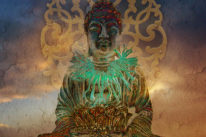
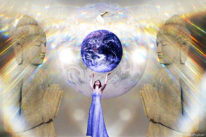
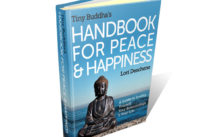


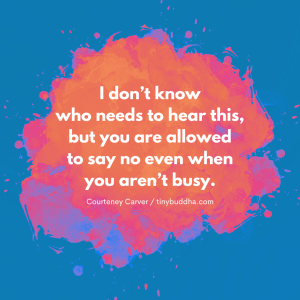
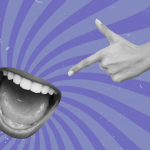
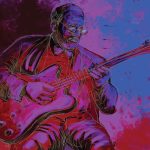

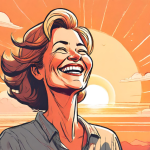
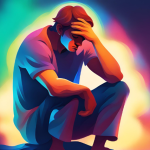
 Though I run this site, it is not mine. It's ours. It's not about me. It's about us. Your stories and your wisdom are just as meaningful as mine.
Though I run this site, it is not mine. It's ours. It's not about me. It's about us. Your stories and your wisdom are just as meaningful as mine. 